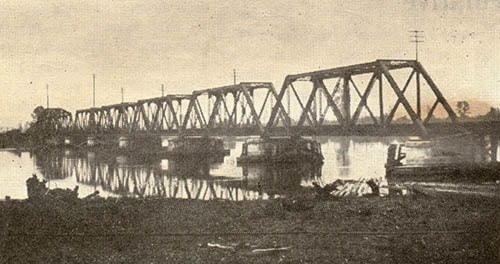In May 1912, just two years before Pitt Meadows was incorporated, by some accounts, the area was a hot commodity.
A picture of the community, as painted in the developer-slanted Coquitlam Star newspaper, was that of a booming area marked by “rapid development,” including the construction of many roads into areas of “fertile land reclaimed from the river.”
In reality, Pitt Meadows was a young, isolated agricultural community of less than 200 people.
The first school house had opened less than six years before and the post office, located in the only general store in the community, was only four years old.
Roads were scant and the only bridge over the Pitt River was the single track CPR span.
However, road work was being done at a fairly good pace, with Dewdney Trunk being graveled over a two-mile stretch and what is now Baynes Road being pushed through as was the new Park Road.
The Seventh Day Adventists made up a good part of the population of the community, as they had a colony in the area of what is now Hoffmann Park, and in that September, a road, now known as Advent, was built to accommodate their needs.
Further north, Archbishop McNeil purchased more than 700 acres on the bank of the Pitt River, with the intention of settling Catholics in a colony on the site, and the government was in the process of pushing Harris Road north to assist them.
The CPR had begun the double tracking of the railway through the area and an encampment with hundreds of workers was newly located on the banks of the Pitt River.
One article in the Star noted between 200 and 300 railway men were at work with steam shovels at “the gravel pit,” although we have to guess what pit that was.
In less than two years, the original single-track bridge would be floated up river to become the area’s first auto crossing.
There were already some movers and shakers in the community.
Wellington Jeffers Harris had been the Reeve of Maple Ridge and was an MLA and diking commissioner, and W.J. Park had taken over the secretaryship of the fledgling Milk and Cream Shippers Association of the Lower Mainland.
By August, there was a move afoot to become a municipality.
The Star reported: “a movement significant of the development already attained by the rich agricultural district of Pitt Meadows, and of the confidence felt by the residents in their future growth, has just began, having as its object the incorporation of the locality as a municipality, and the property owners are being asked to sign a petition to this end ...”
W. J. Park was appointed secretary of the committee in charge of organizing the “movement.”
The intended boundaries of the new municipality were to be west from Maple Ridge to the Pitt River and south to the Fraser River and north to Pitt Lake – 13,000 acres, or 25 square miles, with a total population of somewhere between 300 and 400.
The countdown has begun.
Leslie Norman is curator at Pitt Meadows Museum.
